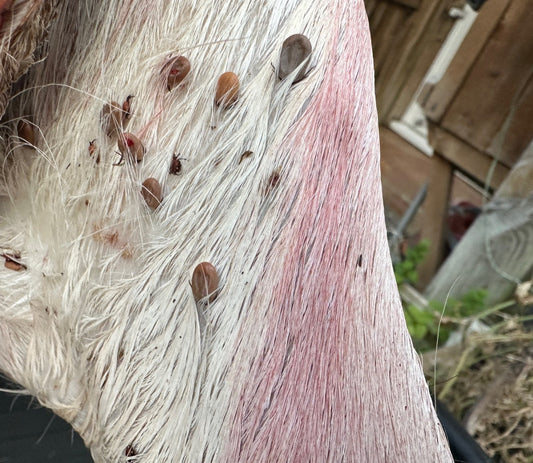If you’ve spent any time managing woodland in the South East, you’ll know we’re facing a deer population problem, particularly with fallow. The effects are clear: failed regeneration, damaged crops, overgrazed understorey and disrupted biodiversity. These aren’t future risks. They’re here now. And yet, even with the evidence mounting, we still hear the same tired arguments against professional intervention.
A recent article BBC: "We just want to let the deer live" once again echoed a view that many of us working on the ground hear all too often: the belief that the best course of action is to “leave them alone.” It’s a comforting sentiment, but unfortunately, it’s not a viable solution.
The Reality of Professional Deer Management
We’ve been managing deer on three sites surrounding a particularly hard-hit parcel of woodland for several years now. Thanks to consistent effort, cull planning, and monitoring, numbers have been brought down to a sustainable level, sustainable not only for the habitat, but for the deer themselves. But even with active control, we still see deer moving in from neighbouring areas.
This is basic ecology: when a species has no natural predator and unlimited food sources, numbers grow rapidly. Deer aren’t confined by fences or boundaries, they move. And without cooperation between estates, landowners and professional deer managers, you end up in a cycle of progress in one place being undone by inaction in another.
Ongoing management isn’t optional, it’s essential. And yet, again and again, we hear arguments against it, often based on emotion rather than ecological fact.
“Just Let Them Live” Isn’t a Strategy
No one working professionally in wildlife management enjoys seeing animals suffer. Quite the opposite. We work to prevent suffering, of deer themselves, of other wildlife species whose habitats are under pressure, and of ecosystems that are slowly being eroded by overgrazing.
To suggest that management is cruel, or unnecessary, is to ignore the real suffering that results from neglect:
Deer dying slowly from starvation during hard winters because populations outstrip food supplies.
Loss of ground-nesting birds due to the disappearance of understorey cover.
Regeneration failures across entire woodlands, undermining re-wilding, carbon capture, and climate resilience efforts.
Intervention doesn’t mean indifference. It means responsibility. If we as a society are encroaching on natural habitats, then it is also our duty to ensure those habitats remain viable, not just for deer, but for all wildlife. That includes managing species that no longer have natural predators, like deer.
The Importance of Coordination
The South East presents a particular challenge. Woodlands are often fragmented, interspersed with farmland, vineyards, and public access land. Deer move freely between these areas, and without joined-up thinking, population control in one area has little long-term impact.

That’s why cooperation across estates, between recreational and professional stalkers, and among woodland owners is now more critical than ever.
For every estate taking proactive action, there’s often a neighbouring parcel doing nothing. In those cases, fallow will simply shift range, reoccupy ground, and undo the progress that’s been made. Real progress will only come when deer management is tackled as a shared landscape issue, not something dealt with in isolation.
We often work with landowners to help them engage with neighbouring estates, and in some cases even coordinate cooperative culls or data-sharing on impact assessments and deer movement. It’s not about telling anyone what to do. It’s about recognising that deer don’t read boundary maps and neither should our strategies.
The Bigger Picture: Biodiversity and Food Security
There’s also a wider conversation to be had. We talk a lot about restoring biodiversity and increasing woodland cover to meet climate goals. But deer, left unmanaged, make this virtually impossible in many parts of the South East. Young trees are browsed before they reach 50 cm. Woodland floor plants are absent. Regeneration stalls, even in nature reserves.
If we truly care about biodiversity, climate resilience and the integrity of our woodlands, then deer control must be part of the conversation. And not as an afterthought.
There’s another dimension to this, too. In a time when meat protein is increasingly expensive and the debate around sustainable food systems is ongoing, wild venison represents a highly ethical, low-carbon protein source. It’s lean, free-range and locally sourced. The idea that meat from professionally culled deer should go to waste because of reluctance or sentiment, is not just misguided, it’s wasteful.
At Wildscape, we’re already working with landowners to make use of culled venison. Whether that’s supplying into local markets or supporting community food initiatives, there’s room to turn necessary management into a social and environmental positive.
Where Do We Go From Here?
We don’t need to agree on every detail to agree on the outcome: that deer populations in the South East need to be reduced and then managed at a sustainable level. That won’t happen through argument or delay. It’ll happen through professionalism, practicality, and collaboration.
Until a viable, scalable, and proven alternative to lethal management exists, culling carried out ethically and professionally, is the only tool available to us. And unless it’s applied consistently across the landscape, the problem will persist.
Let’s stop framing deer management as a matter of cruelty versus compassion. The compassionate option is structured, well-considered intervention led by those who understand the land, the species, and the stakes. And it starts with working together.






